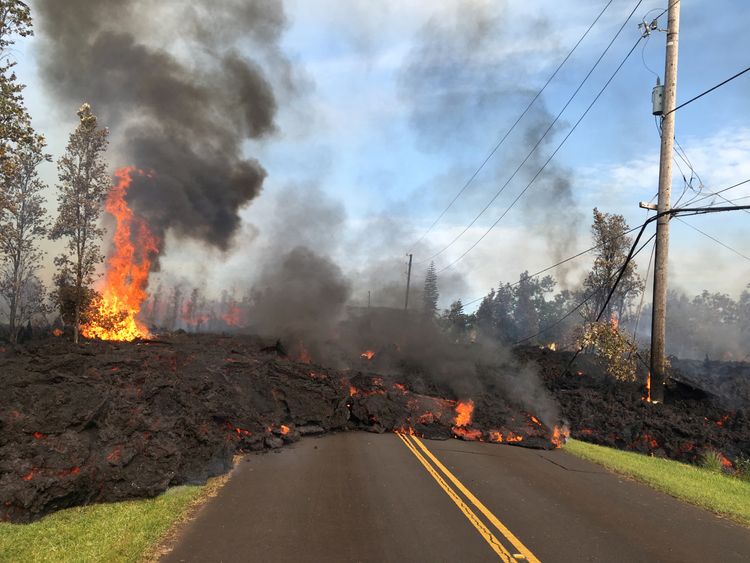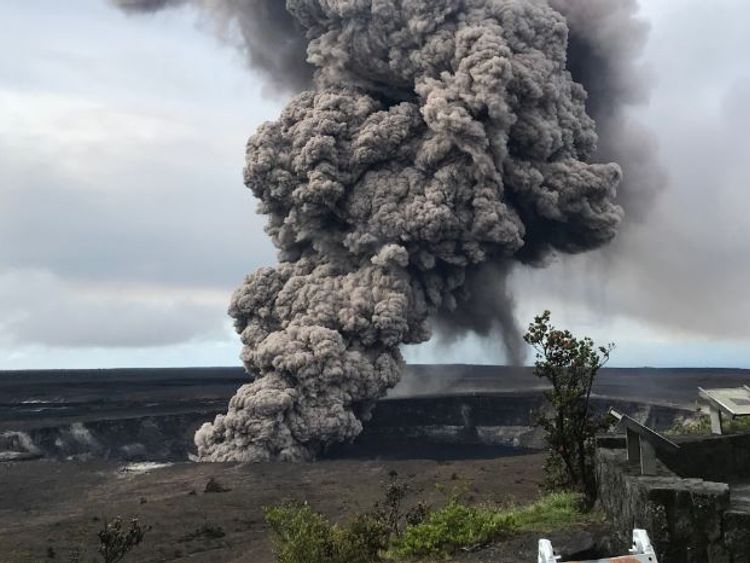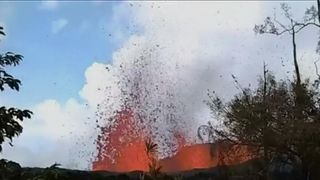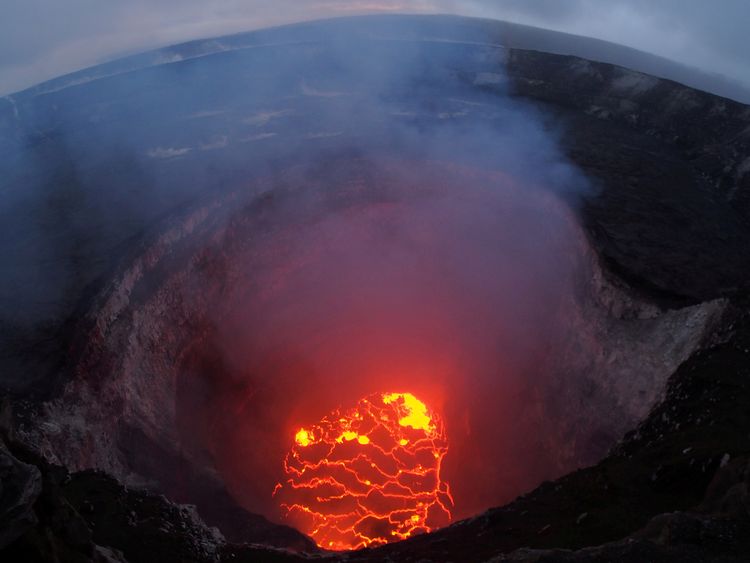Hotter and faster lava flows with higher levels of toxic gas could soon hit Hawaii's big island, volcano experts have warned.
The fresh warning came after Donald Trump declared a major disaster on Hawaii's Big Island.
Homes have already been destroyed by lava and 1,900 people evacuated in Puna district after 15 large cracks opened up eight days ago on Kilauea's eastern flank.
A lava lake at the summit is draining inside the volcano, with the magma running underground, and scientists believe it could burst to the surface producing hotter, faster-moving lava.
"What will take a turn for the worse in terms of hazard is if hotter, fresher magma makes it to the surface, and that could be what is coming," said Hawaiian Volcano Observatory lead scientist Tina Neal.
"Once a new batch of hotter, gassier magma makes it to the surface we might see larger, higher eruption rates."
The magma that has emerged so far has been relatively cool and slow-moving, believed to be left over from a similar event in 1955.


The other threat – which could happen within days, or take weeks – is that future eruptions could launch boulders the size of small cars and churn out 'vog' – volcanic smog clouds.
Mr Trump declared a disaster on Friday following a request from Hawaii's governor, David Ige.
The move frees up money for emergency repairs to infrastructure such as roads and water supplies, as well as paying for geologists and extra security.
Residents in the Leilani Estates area in southeastern Puna district – where people have been evacuated – got a text message on Friday to say they would have hardly any time to escape in the event of future eruptions.
 1:21
1:21"We are telling people to plan for the worst. They should have a plan A, a plan B and a plan C," said Roann Okomura, an official at one of the evacuation shelters.
One resident, Ron Peters, said he knew it was time to leave when vegetation started to wilt amid the foul-smelling sulphur dioxide gas clouds.
"When you start seeing ferns go brown overnight, it's like, 'Wow, I gotta get out of here,'" he said.

His wife refused to leave and stayed at the house to care for their dogs and chickens. When he went back to the property, his dog was having trouble moving but his wife was alive.
The volcanic smog from Kilauea also appears to be affecting people 350km (210 miles) away in Hawaiian capital Honolulu, where people complained on Friday that it was "very voggy".
Kilauea is one of the most active volcanoes in the world and one of five on the island.
More from Donald Trump
A magnitude-five earthquake under its south flank preceded an initial eruption last week and several severe aftershocks followed.
A quake last Friday was measured at magnitude 6.9, the most powerful to hit the islands since 1975.
[contf] [contfnew] 
Sky News
[contfnewc] [contfnewc]






